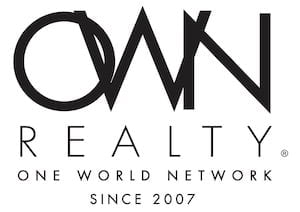1031 Exchange in Missouri
- Home
- 1031 Exchange in Missouri
Considering A Tax Deferred 1031 Exchange in Missouri? We are here to help!
Engaging in a 1031 exchange in Missouri presents a strategic avenue for real estate owners and investors to optimize their portfolios while deferring capital gains taxes. Unlike conventional property transactions, a 1031 exchange treats the entire process as an exchange, allowing taxpayers to qualify for deferred gain treatment under US CODE: Title 26, §1031.
In the vibrant real estate landscape of Missouri, a 1031 exchange becomes an even more compelling strategy due to the potential for increased property values and market dynamics. As investors consider the replacement of an existing property with a “like-kind” asset, the implications of capital gains taxes should not be underestimated. The current 15% capital gains tax rate, which might escalate to 20% in the future, underscores the significance of strategic financial planning.
Moreover, executing a 1031 exchange in Missouri necessitates a thorough understanding of both federal and state tax rates. State-specific considerations play a crucial role in the overall financial impact of the transaction. Investors should be attuned to the tax regulations unique to Missouri, ensuring a comprehensive approach to tax deferral.
Missouri’s diverse landscapes, ranging from bustling urban areas to serene rural regions, contribute to the complexity and opportunities within its real estate market. When contemplating a 1031 exchange in Missouri, investors should recognize the state’s economic resilience and growth potential, factors that enhance the appeal of such a tax-deferred strategy.

Understanding the intricacies of this tax-deferred transaction is paramount for successful execution. The Internal Revenue Code, specifically Section 1031, outlines the essential tax code for a seamless exchange. To navigate the process effectively, it’s essential to consider the IRS’s interpretation as encapsulated in the Like-Kind Exchange Regulations issued by the US Department of the Treasury.
These regulations provide comprehensive insights into IRS rules, guidelines, and requirements for a 1031 exchange, offering a roadmap for investors. The longevity of real estate investments is a key factor in the 1031 exchange equation.
The IRS’s annual depreciation of capital real estate investments, at a rate of 3%, adds a layer of complexity to the tax implications upon sale. By embracing a 1031 exchange, investors gain a powerful tool to navigate the intricacies of depreciation and taxation.
In the state known for its thriving cities like St. Louis and Kansas City, investors engaging in a 1031 exchange can strategically position themselves to capitalize on urban development projects. These initiatives often drive property appreciation, creating a favorable environment for investors seeking to upgrade their real estate portfolio. The tax advantages provided by a 1031 exchange amplify the potential returns on investment in this dynamic market.
Why Consider a 1031 Exchange in Missouri?
For real estate owners and investors eyeing opportunities in Missouri, a 1031 exchange is a strategic move when contemplating the acquisition of a replacement “like-kind” property following the sale of an existing investment property.
Failing to leverage this option could result in the imposition of a capital gains tax, currently at 15% but potentially rising to 20% in the future. Additionally, it’s crucial to factor in both federal and state tax rates when executing a 1031 exchange in Missouri.
Consider a scenario where an investor has held a property for 15 years, subject to the IRS’s annual depreciation. The accumulated depreciation amounts to 45%, and the IRS aims to tax this depreciated portion as income tax. When factoring in the combined state and federal taxes at a marginal rate of 35%, the tax obligation equates to approximately 15% of the property’s cost, constituting one-third of the 45% depreciation.
In the absence of a 1031 exchange, the financial landscape shifts significantly. Purchasing a replacement property without the benefit of this tax-deferred strategy results in a reduction of purchasing power. The new property’s value only represents 70-80% of its previous worth, factoring in the impact of both the exchange and the tax payment.
In conclusion, a 1031 exchange in Missouri is not just a tactical maneuver for tax deferral; it’s a holistic strategy that aligns with the unique aspects of the state’s real estate market. Investors who leverage this tool gain not only a financial advantage but also a strategic edge in navigating the ever-evolving dynamics of real estate in the Show-Me State.
Furthermore, Missouri’s economic policies and business-friendly environment contribute to a climate conducive to real estate investment. The state’s strategic location and infrastructure investments make it an attractive destination for businesses, driving demand for commercial properties. Investors can leverage the 1031 exchange to navigate the intricacies of commercial real estate transactions and position themselves advantageously in this competitive landscape.
The state’s commitment to preserving historical landmarks and promoting cultural heritage also opens doors for investors looking into properties with unique historical significance. By participating in a 1031 exchange, investors can diversify their portfolios with historically valuable assets while deferring capital gains taxes—a win-win scenario that aligns with Missouri’s rich cultural tapestry.

The Significance of a 1031 Exchange:
The primary incentive for pursuing a 1031 exchange lies in the IRS’s depreciation of capital real estate investments. At a rate of 3% per year, the IRS depreciates the investment until it is fully depreciated. Upon selling the capital asset, the IRS aims to tax the depreciated portion as income tax, based on the marginal tax rate. For instance, if an investment has been held for 15 years, with a 45% depreciation, the IRS seeks to impose taxes on that 45% depreciation.
If combined state and federal taxes amount to 35% at the marginal rate, this translates to approximately 15% of the property’s cost (one-third of the 45%). If the property is fully depreciated, the entire 35% marginal tax rate applies. In the absence of a 1031 exchange, purchasing a replacement property diminishes purchasing power to 70-80% of its previous value, considering the exchange and tax payment.
As the real estate market in Missouri continues to evolve, the 1031 exchange emerges as a versatile and powerful tool for investors. It not only addresses the immediate tax implications of property transactions but also aligns with the broader economic trends and opportunities unique to the state. Investors navigating the intricate landscape of Missouri real estate can find strategic advantage and long-term financial benefits by incorporating the 1031 exchange into their investment strategy.
A 1031 exchange in Missouri is not just a tax-deferred transaction; it’s a strategic tool that empowers investors to navigate the nuances of the real estate market while optimizing their financial outcomes.
Discover Your Path to Wealth Preservation
Power of 1031 Exchanges
Are you ready to embark on a financial journey that could reshape your real estate investments? Look no further! At Sapphire Investment Solutions, we specialize in turning the complex world of 1031 exchanges into a streamlined, wealth-building opportunity.


 Call us today:
Call us today: